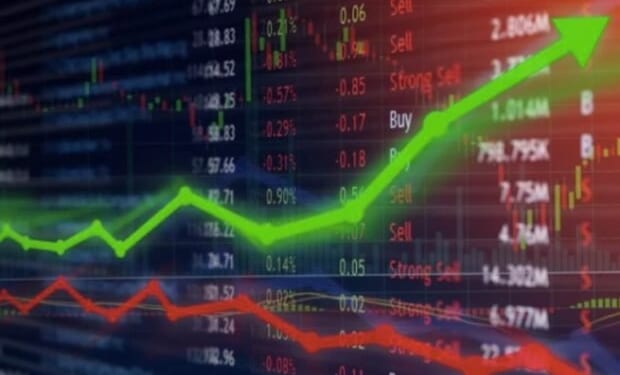
It’s barely past 6 a.m. in New York, and the tape is already twitching. Dow futures edge up 30 points, slip 20, then push again. It’s not a big swing, maybe 40 or 50 points, but enough to spark chatter on futures desks. In London, one trader mutters about “nervous buying.” Another, watching from Hong Kong, chalks it up to Asia’s overnight rally spilling westward.
Before the U.S. morning even stirs, plenty has unfolded. Tokyo closed in the green. European bond yields softened after a lighter inflation print. Oil popped, then gave back half the move. All of it feeds into the Dow’s pre-market pulse, sometimes like a steady drip, other times like a sudden jolt.
The shape matters more than the number
A single readout at 7 a.m. doesn’t tell you much by itself. That 60-point rise could be the product of a slow, confident grind upward… or a jagged mess of mini-surges and sharp pullbacks. The difference matters. A smooth climb suggests conviction. A spike followed by a fade whispers caution.
Case in point: back in February, upbeat European inflation data sent Dow futures higher at first. But Asia’s choppy close cut the legs out from under the move. By the time Wall Street switched on, that early optimism had thinned to almost nothing.
Economic releases as a trigger
Some mornings feel like waiting for the drop in a song. The big U.S. data: jobs, CPI, retail sales, sit on the calendar like a loaded spring. Positions are adjusted quietly in the hours before, visible in that slow, one-way drift. It’s the market holding its breath.
When the release hits, the first few minutes can lock in the tone for hours. November gave a textbook example: softer inflation, yields lower, Dow Jones futures up, and the rally held until the close. Other times? It’s a head fake: a quick pop, then a hard reversal, leaving the open looking nothing like the pre-market tease.
Technical tells in thin trade
Even before the bell, familiar levels matter. Break above a widely watched resistance with real volume, and there’s a decent chance the move bleeds into regular hours. Fail, and momentum dies right there.
Volume is its signal. In thin pre-market liquidity, even small orders can make a move look bigger than it is. Seasoned traders know to check both price action and depth before trusting what they see.
Reading the global mix
The Dow doesn’t move in a vacuum. If the S&P 500 and Nasdaq are singing the same tune, the read gets stronger. However, weakness in Europe, or a slump in sectors like banks and energy, can dampen enthusiasm fast, even with good domestic headlines.
Some days, the Dow takes the wheel, especially in heavy industrial earnings seasons. Other days, it’s just another passenger in the global flow. Knowing which role it’s playing can make the difference between striking early and sitting back.
When do Dow futures send the wrong signal?
In May 2023, upbeat industrial earnings pushed Dow futures higher before the bell. Forty minutes later, a geopolitical headline hit the wires. Gains vanished. By lunch, the index was deep in the red.
When do Dow Jones futures get it right?
Late 2023 told a different story. Softer inflation data broke, bond yields sank, and risk appetite returned. Dow Jones futures lifted in pre-market and kept climbing into the close. Traders who moved early, with stops in place, caught a rally that never lost pace.
How do Dow Jones futures shape the market mood before the opening bell?
Before the open, Dow futures aren’t just a number. They’re the sum of overnight headlines, technical inflection points, and the first clues about positioning ahead of the U.S. session. Pair them with other signals, and they can anchor a smart game plan.
They won’t call it right every time. But when they do, it can feel like the market tipped its hand before the first card hit the table.










